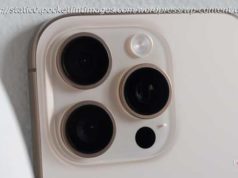The fourth edition of the Internet of Things Solutions World Congress (IoTSWC), which took place in Barcelona earlier this month, signaled an increasing interest in the technology, with the number of attendees increasing by 25 percent year over year, to 16,250.
The fourth edition of the Internet of Things Solutions World Congress (IoTSWC), which took place in Barcelona earlier this month, signaled an increasing interest in the technology, with the number of attendees increasing by 25 percent year over year, to 16,250. The range of topics discussed shows that IoT is being embraced by companies in every sector, and that the technology has now passed from the development phase to the implementation of practical solutions whose results are increasingly evident.
The 200 speeches and panels, divided into thematic areas (manufacturing, healthcare, connected transport, energy and utilities, buildings and infrastructures and open industry), as well as two related events, AI & Cognitive Systems Forum and Blockchain Solutions World included — at the insistence of Richard Soley, Executive Director of the Industrial IoT Consortium (co-organizer of the event together with Fira Barcelona) — presentations of concrete use cases.
Here we list some of the main trends that emerged from the presentations as well as interviews we conducted.
Although natural selection — perhaps facilitated by the future evolution of 5G networks — is likely to reduce the number, too many standards and communication protocols for the Internet of Things will continue for a long time. The «translation» of the signals and their integration into information flows will therefore continue to represent an opportunity for system integrators and companies operating in this sector. Although frameworks and platforms are emerging to manage and standardize the different peripheral systems (the Foundation’s open source EdgeX Foundry proposal deserves attention), they do not exist yet and there will be no «plug and play» solutions for IoT for a while.
Artificial intelligence is the fundamental ingredient needed to make sense of the vast amount of data collected these days, and increase its value for business. The easiest way to implement it is to resort to the API services of cloud operators such as Amazon, Google, Microsoft and IBM. The risk of using standard solutions accessible to all is that they reduce the competitive advantage of the enterprises that use them, since they can be easily implemented by competitors. Creating a proprietary IA platform, however, will not be possible for everyone.
The cloud, meanwhile, is showing its limits: Fast and constant connectivity is not always possible, especially in the case of connected vehicles or installations in remote areas; latency between sending data, processing and response is not always compatible with certain applications; and storage costs are high even for data that is not necessarily indispensable.
There is therefore a growing tendency to relocate part of the storage and processing of data to the periphery of the network, close to sensors and connected objects. This so-called «edge computing» will be increasingly important and increasingly intelligent, thanks to chips optimized for machine learning and solutions able to bring «on premises» the AI algorithms of the «usual suspects», such as Amazon Greengrass, Google Cloud IoT Edge (still in alpha version) or Microsoft Azure IoT Edge.
The creation of a digital twin, which thanks to data collected by sensors can provide a realistic virtual representation of products and systems, will be increasingly applied to entire production processes, allowing not only the monitoring of entire plants, but also predicting what will happen when a new model is out into production, or some variables change. This, according to proponents of the technology, will lead to greater efficiency, faster time-to-market and fewer glitches and non-compliance issues.
For the production of «preventive» digital twins, i.e. simulations of objects or plants that do not yet exist, we are using physical modeling algorithms and, however paradoxical it may seem, also artificial intelligence systems that replace sensors in providing simulations of the expected feedback.






